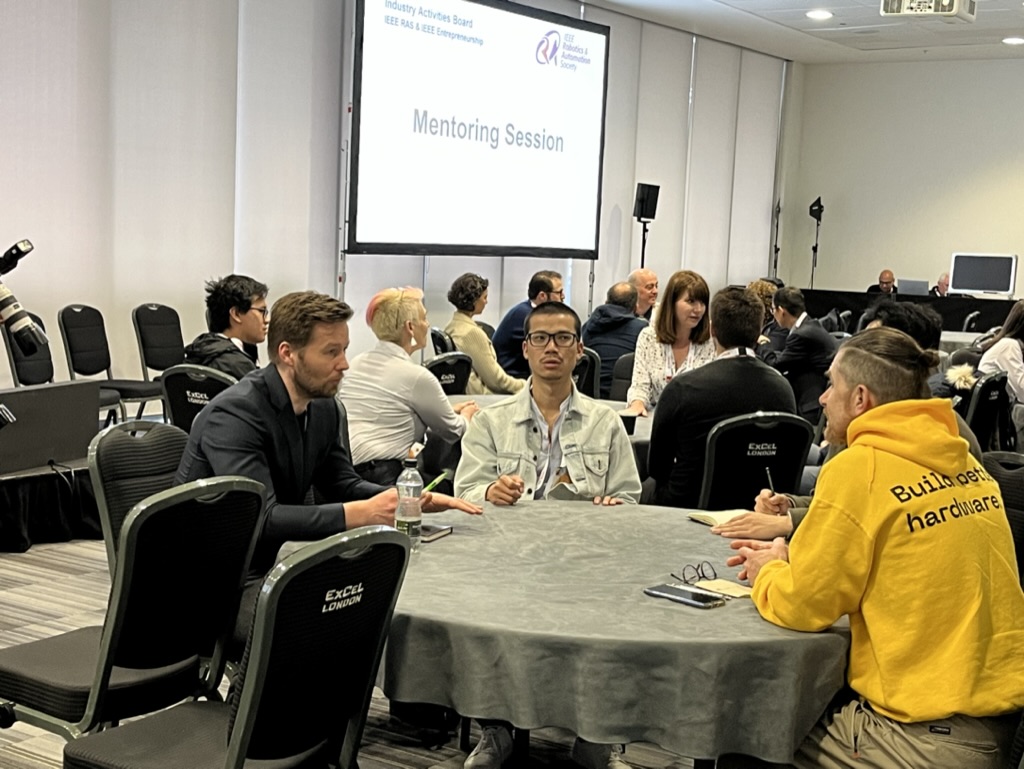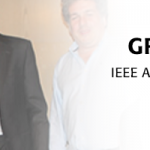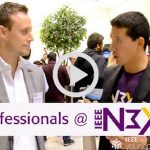A new workshop model bridges the gap between academia and practice
The ICRA conference, held in London in June, had all the hallmarks of a standard conference – notable keynote speakers, a bustling expo hall, an awards ceremony, and of course, a robot mosh pit. But up the escalator and down a long hallway, hidden behind a conference room door like any other event, something unusual was happening.
In the midst of a conference themed, “Embracing the Future: Making Robots for Humans” this workshop was also focusing on the fundamentally human factor in the equation, by addressing something often discussed but very rarely addressed in the community – the gap between great ideas and practical application.
The IEEE Robot and Automation Society Industry Activities Board is developing a checklist to help start-ups take their robot prototypes through the manufacturing process, and ultimately into the market. The workshop, held to field test the checklist, gain feedback, and understand the types of questions still needing answers, was one of two pilot workshops testing the checklist before it’s to be rolled out as a dynamic, evolving curriculum for IEEE members later this year. A brief panel discussion with industry experts was followed by a robust question and answer period. Attendees were then able to break out into groups, with an expert at each table, to have detailed discussions specific to their individual projects.
“I think IEEE has really underestimated the appetite for developing start ups. For societies that are focused on maintaining infrastructure, the focus is on credentials. For a society that is focused on innovation in their field, like robotics, then the primary vehicle for innovation is start-ups,” said Andra Keay, IEEE RAS Industrial Activities President & IEEE Entrepreneurship Deep Tech Lead.
“The best way of delivering this is to provide a checklist curriculum that you can endorse, pointing to outside resources as well, that you can maintain,” Keay explained. “Then present it, not in a panel format, but in forms of roundtables or office hours, places where people can have questions and answers. It’s good to have people explain who they are, what they do and what things they think are important to ground the questions, but really make it about the people who come to the forum to get their questions answered.”
The goal of such a process is to shift the traditional conference workshop from one of a publication-based learning model to that of a project-based learning, and give attendees professional skills that they won’t learn in an academic setting, or those that they’ll need long after they’ve left formal schooling but their field continues to evolve.
“The curriculum and the motivation behind the manufacturing checklist was there is a lot of support for startups in discovery and their initial prototyping, but once they get ready for manufacturing there’s a lot less information out there and people have to go it alone,” said Malcolm Knapp, an RAS member and product management consultant brought on to help steer the development of the curriculum. “The end result is not to write an academic paper, it’s to build documentation for your robot. This workshop is another step in the development of project-based learning.”
One of the benefits of the workshop is the informal pitch process, in which inventors share their ideas with experts in the field. Keay said that the act of getting people out of their labs into real-world discussions of their product can save significant amounts of time, and money, and increase a builder’s chance of success – even if success doesn’t look like he or she originally had envisioned.
“If you are developing a start-up, time is money. Every minute of your time, every minute of your team’s time, is draining your very scarce resource, which is whatever is funding your progress,” Keay said. “It is a criminal waste of that resource if you land a very nice funding source and then you add more staff and then fidget over your prototype instead of getting people out into the field and getting feedback and making changes and lining up business customers and trying to sell them.”
“A lot of people want to finish the tech because it’s their favorite thing – you get into robotics because you dream of building robots. But you’re not going to build your dream robot,” Keay said. “The people who succeed are the people who are saying what if I solve this problem for you this way will that work and hearing no.”
This workshop model is one that can be translated to other conferences and events that focus on practical applications of new technologies. Keay and Knapp both recommend minimizing or eliminating the panel discussion in favor of introductions to the experts and break-out sessions; keeping the focus on small, round tables throughout the meeting space; setting a topical expert at each table, and providing ample time for discussion and questions in an office hour style format. They both recommend expanding the conference learning model beyond paper presentations.
“The fact that we have tied conferences to publications means that is the primary business and it is hard to compete with that,” Keay said. “But for many people, that’s their primary focus this year or next year, but then they’re going to start a company, and they’ll need resources and project-based learning to do that.”
The next workshop for the manufacturing checklist will be held at the IROS conference in Detroit October 1-5, 2023. For more information, contact Andra Keay at andrakeay@ieee.org.






